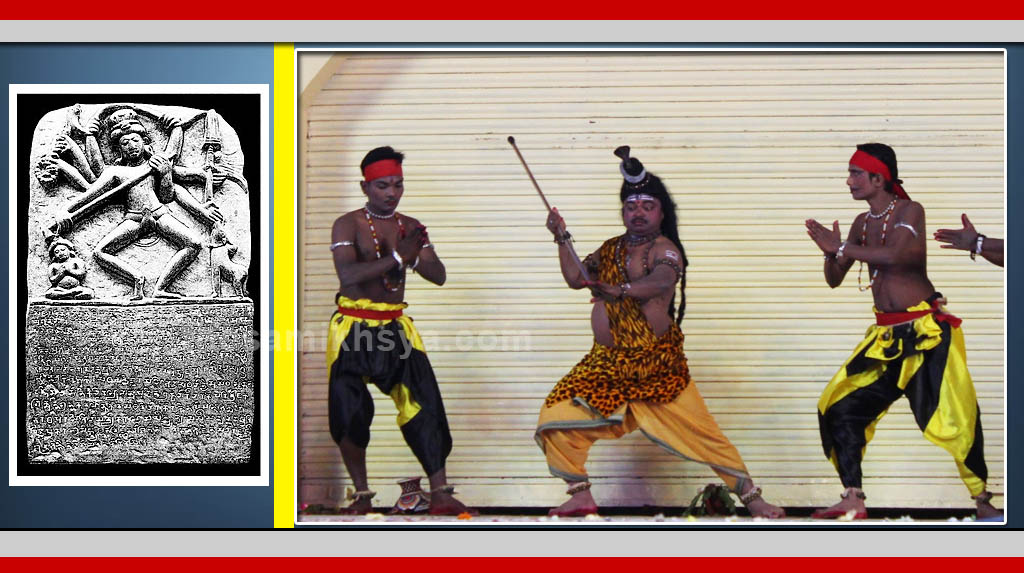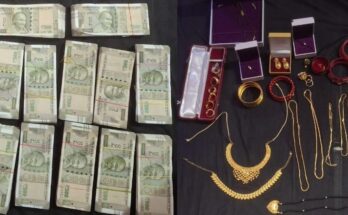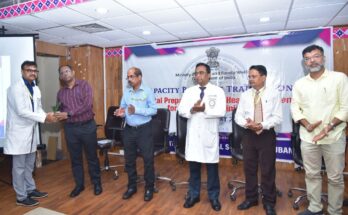Shyamhari Chakra
BHUBANESWAR: Devoid of any patronage and recognition, the tribal people of Asanpat village in Odisha’s Keonjhar district have upheld the centuries old Chhau dance tradition.
Believed to be in vogue since fourth century AD when Satrubhanja, the famed king of the Bhanja dynasty that ruled over Keonjhar-Mayurbhanj regions of Odisha and its adjoining Singbhum region, now in Jharkhand state, Asanpat village and its dance tradition came into limelight a little over 50 years ago with discovery of a very ancient and unique sculpture of Shiva from the village.
“We encounter here some of the first dance reliefs of the Nataraja (Shiva). One amongst these is the recently recovered from Asanpat village in the district of Keonjhar (in Odisha) is of special importance. It is an inscribed image of Shiva with eight arms holding a veena, trishula and akshayamala, a damru with a pataka and a varadahasta. The inscription in Brahmi characters is ascribed to Shatrubhanja, a king of the Bhanja dynasty who constructed shrines for Shiva” – wrote India’s most celebrated scholar Kapila Vatsyayan in 1970 following which the village attracted the attention of scholars and researchers on dance and sculpture from far and wide.
Ironically however, with transfer of the recovered sculpture from the village to Odisha State Museum in Bhubaneswar, Asanpat village again went back into oblivion.
“I vividly remember those days when so many visitors came to our village to see the Shiva sculpture. I was a young boy then. We were surprised but happy to see a number of cars coming to our village carrying important people. Even the District Collector had come. But, after they took away the sculpture, they simply forgot our village,” sighed 70-year-old Dambarudhar Naik of the village. A retired school headmaster, he has been writing a book about Asanpat village and its legacy.
Situated at a distance of 35 kilometres from the district headquarter town of Keonjhar, Asanpat is a large village with about 700 Bathudi tribal families spread across nine colonies (sahis). “Each of our nine sahis has a Chhau troupe and each hamlet has its own stage for performance during the annual Chaitra Parva that happens during April. Our Chaitra Parva goes on for 10 days and 11 nights. The final day witnesses the most awaited wedding ceremony of Lord Nataraj, the god of dance, and Parvati,” Naik elaborated.
Except their own community-hosted annual festival, the Chhau troupes of Asanpat hardly get any invitation to perform outside their village. “Lack of any encouragement, support or recognition has discouraged the younger generation to purse a passion for their centuries old tradition. As a result, the quality of dance is dying that worries us,” laments Bhaskar Naik, one of the old exponents of the village who trains a troupe.
“There is an urgent need for the government intervention to help the people of Asanpat continue such an ancient and glorious tradition. They must be offered an annual grant by the department of culture to conduct their festival apart from inviting experts for an advanced training. Moreover, Asanpat deserves to be known as a heritage village that would attract visitors. This would restore the glory of the village and would encourage the new generation to be professional Chhau dancers,” suggests Dambadharu Mohanta, well-known researcher and writer on cultural affairs of Keonjhar.




